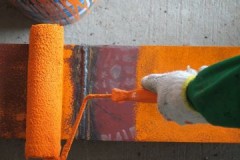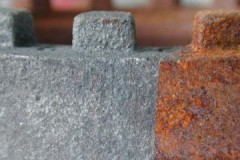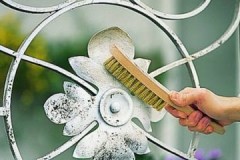Several effective recipes on how to clean coins from rust and oxidation at home
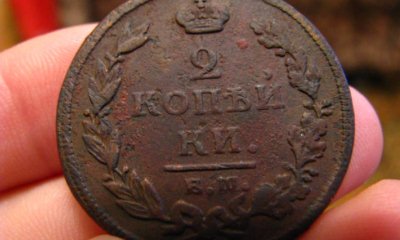 Old and current coins are often covered with red, whitish, green spots. Such defects have nothing to do with the noble patina, as they are the result of oxidation.
Old and current coins are often covered with red, whitish, green spots. Such defects have nothing to do with the noble patina, as they are the result of oxidation.
To remove traces of oxides and dirt, it is recommended to use the most effective recipes. Folk remedies or professional formulations can be used as cleaners.
In restoration work, it is important to consider the degree of corrosion and the material from which the coin is made.
Let's take a closer look at how and how to clean coins, including rusty old ones, from rust and oxidation at home.
Content
How can you remove folk remedies?
The appearance of rust and other oxides on coins - it is the result of product contact with:
- water,
- earth,
- fat and other substances.
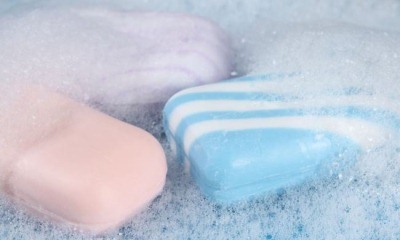 These include:
These include:
- soap,
- soda,
- cola,
- ammonia,
- kerosene,
- spoiled milk,
- vinegar,
- citric acid or juice
- Toothpaste.
Soap
Any type of solid detergent can be used. Laundry or baby soap is most often used.
The method is considered gentle, effective and versatile.as it is suitable for any coins. However, it helps to cope only with weak traces of oxidation.
A soap solution is prepared in a container by adding shaved soap (40 g) to heated water (60 ml). Place coins in the foaming liquid for 4-6 hours. After that, wipe the remaining dirt with your fingers or a napkin and rinse.
Soap solution and soda
This method helps when the usual soap solution does not cope with the task of cleaning from rust.
Soaking time depends on the degree of soiling... For some coins, a few hours are enough. For products subjected to severe corrosion, it takes up to several days or even weeks.
If the coins are kept in soap and soda gruel for a long time, then periodically the composition is replaced with a fresh one, and the plaque formed from the surface of the metal is cleaned off with a napkin.
How to wash with kerosene?
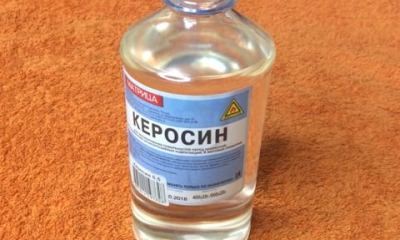 The tool is one of the most effective and simple. However, during cleansing, you must carefully monitor the process in order to recognize its completion in time.
The tool is one of the most effective and simple. However, during cleansing, you must carefully monitor the process in order to recognize its completion in time.
For work, take a transparent glass or container from a chemically inert material... They put coins in it and fill it with kerosene. A small amount of WD-40 grease can be added to soften the reaction.
The holding time depends on the depth of oxidation and can range from a few minutes to 24 hours. Transparent walls of the dishes allow you to monitor the dissolution of oxides. As soon as the surface of the object is clean, it is taken out and wiped with a cloth.
How to remove with ammonia?
The ammonia agent helps to easily achieve a positive result, and the cleaning process itself is simple and fast.
During soaking, the round timber is periodically turned over, without removing it from the ammonia... When the cleaning is completed, add pure water to the container to dilute the concentration. After that, the coins are taken out and washed with water. Experts do not recommend removing coins from concentrated ammonia.
If the metal is weakly oxidized, ammonia can be used in another way: apply the liquid to a cotton swab and wipe the surface of the product.
How to remove old rusty Coca-Cola plaque?
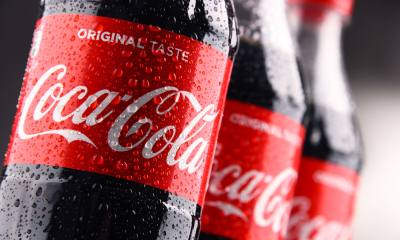 Carbonated drinks containing phosphoric acid are often used to dissolve rust. Weak organic acid effectively removes oxides, converting them into easily removable salts.
Carbonated drinks containing phosphoric acid are often used to dissolve rust. Weak organic acid effectively removes oxides, converting them into easily removable salts.
The method is quite simple: money is dipped into a container, poured with cola and marked for 30-60 minutes... The process is repeated if necessary.
You can speed up the cleansing by very lightly heating the cola in a water bath. After the oxides have dissolved, the surface of the coins is wiped with a rag. Read more about cleaning objects and surfaces from rust with Coca-Cola. here.
How to get rid of using special formulations?
The chemical industry has developed many special tools to help eliminate oxide on coins. Some of them are universal and suitable for any metal, others are only for a certain material.
Asidol-M
The multipurpose product is available as a paste or liquid... Asidol-M helps to get rid of rust and dirt on precious metals, stainless steel, non-ferrous metals. The composition includes surfactants, soft abrasive substances, active additives.
The average price of a bottle (120 g) is 200 rubles.
Trilon-B
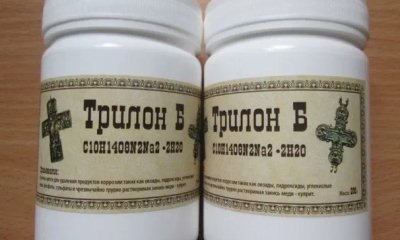 Powdered white product, the main component of which is ethylenediaminetetraacetic acid disodium salt.
Powdered white product, the main component of which is ethylenediaminetetraacetic acid disodium salt.
Suitable for cleaning non-ferrous banknotes. When working with Trilon-B, be sure to wear rubber gloves.
Pour 200 ml of warm water into a plastic or glass container. Dissolve a teaspoon of powder in it. Apply the solution to the surface of the coin with a brush or sponge.
The holding time depends on the oxidation state of the metal... After cleaning, the product is washed with water.
A jar containing 100 g of the drug costs an average of 200 rubles.
Modern Russia
Shine Coins brand paste is designed to remove oxides from bimetallic and electroplated coins.In addition to inorganic acids, the formula contains nano-dispersed abrasive, surfactant.
Before opening the jar, shake it, apply the paste on a cotton pad and spread it over the surface of the product... After the metal is cleaned, the coin is thoroughly washed with water. A 150 ml jar can be bought for 300 rubles.
What can't be used and why?
To keep the pattern on the coins, to protect the surface from scratches and other damage, you must remember about prohibited means and methods of cleaning.
Taboo includes:
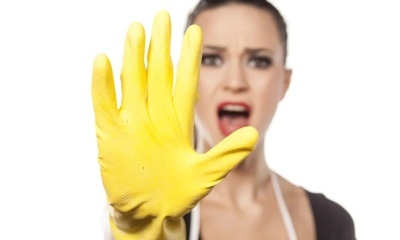 aggressive compounds - strong reagents can partially dissolve the metal and damage the image;
aggressive compounds - strong reagents can partially dissolve the metal and damage the image;- abrasives - they scratch the metal surface and level the volumetric pattern;
- strong heating - heat treatment can provoke deformation of an expensive product;
- Prolonged soaking in any cleaning agent - it can degrade the appearance of the coin.
If a particular agent raises doubts about the effectiveness and safety, it is recommended to refrain from using it. This is especially true for radical ultrafast methods. They can harm the coin and reduce its numismatic or modern value.
Features of cleaning coins from different materials
Despite the fact that there are universal means for removing oxides from the surface of coins, it is extremely useful to know the peculiarities of cleaning different types of metals.
Each material has its own subtleties and cleansing tricks:
- Gold Silver... For expensive metals, ammonia products and a soap solution are suitable. It is not recommended to use powdered detergents. Despite their cleaning properties, they leave a cloudy film on the surface. Soft brushes are suitable for polishing precious metals.
- Copper. Red oxides are removed from copper coins with ammonia. Green or yellow plaque can be easily removed with organic acids. It is desirable to cover copper with a patina, as it protects the active metal from oxidation.
- Bronze. To treat the surface, coins are immersed in hot vegetable oil for 5 minutes, washed with water and then alcohol.
- Zinc. Cleaning of such products is a laborious process involving the use of 1% hydrochloric acid. When cleaning, it is important to monitor the state of the metal every second, while cleaning the coin with a brush without removing the acid from the solution.
- Aluminum. It is not recommended to completely remove the gray oxide film on the surface of coins, as this impairs the aesthetics of the product. It is enough to make it thinner with mild means (soap, cola).
Additional Tips
Using home and professional remedies from the store allows you to quickly achieve a positive result. So that the cleansing process goes without problems, it is useful to listen to additional recommendations:
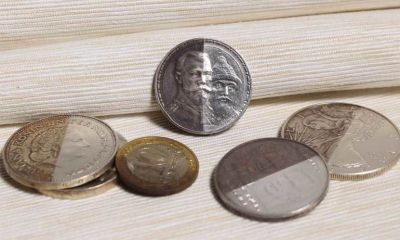 If the rusty layer is old, and the coin is of great antique value, it is advisable to entrust its cleaning to a specialist. The workshops use professional ultrasonic equipment, which allows you to delicately remove the oxide.
If the rusty layer is old, and the coin is of great antique value, it is advisable to entrust its cleaning to a specialist. The workshops use professional ultrasonic equipment, which allows you to delicately remove the oxide.- Regardless of the agent chosen, after cleaning, traces of plaque are removed from the metal surface, washed with clean water and thoroughly dried with a paper or cloth napkin.
- For drying, it is allowed to use a thermostat or drying cabinet, in which the temperature is set at around 50-80 degrees.
- To protect them from oxidation, after cleaning, coins can be preserved in paraffin or synthetic resins. A 5% solution of polybutyl methacrylate in acetone, toluene or xylene or a solution of polyvinyl butyral in alcohol is also suitable for processing.
- Store gold and silver coins separately from other items. This will reduce the rate of their fouling and oxidation.
Related videos
The video will tell you how to clean coins:
Conclusion
To return coins covered with rust and oxides to their original appearance, it is worth using any suitable product from a folk collection or store assortment.
During the procedure, it is important to follow the instructions, take into account the quality of the metal and the degree of corrosion... After cleaning is complete, it is recommended that you use and store your coins under proper conditions. In this case, the products will look perfect and match their value.

